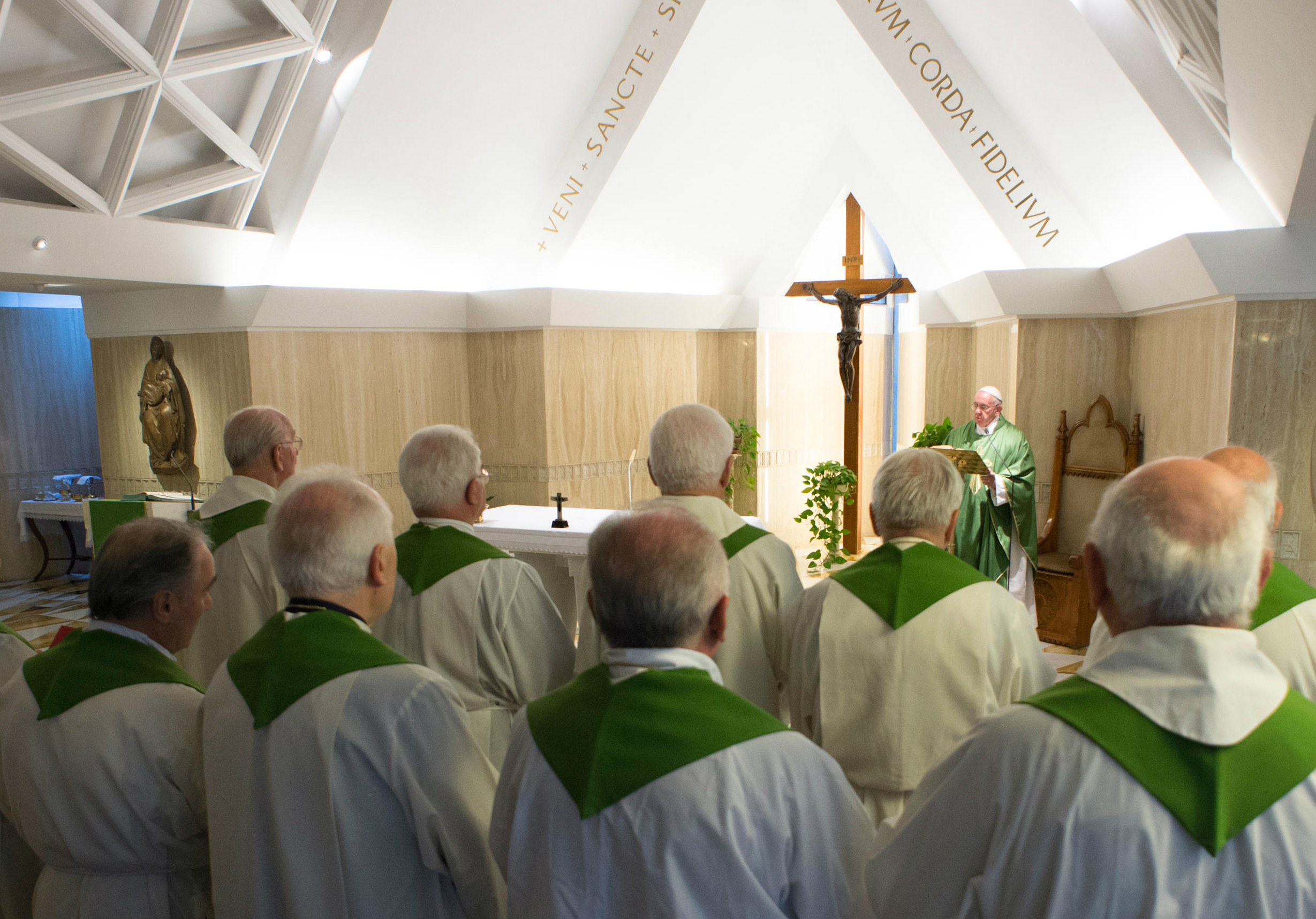Answered by Legionary of Christ Father Edward McNamara, professor of liturgy and dean of theology at the Regina Apostolorum university.
Q: When the consecrated hosts are returned to the tabernacle after communion, the faithful are asked to stand up; I ask myself why, if I have just received Communion? — T.Z., Milan, Italy
A: We have received several questions from Italy regarding this question. Some of the questions mentioned a solemn procession from the altar to the tabernacle with the ciborium being carried with humeral veil and accompanied by two candles. The reasons given were, among others, to educate the faithful regarding the sacredness of the Eucharist and the respect due to Our Lord’s real presence.
While these are laudable goals, which I certainly share, I do not think this is the appropriate manner or moment to do so.
The General Instruction of the Roman Missal (GIRM) makes no mention of any such procession. For example, when dealing with a Mass with a single priest, No. 163 states:
«When the distribution of Communion is finished, the priest himself immediately and completely consumes at the altar any consecrated wine that happens to remain; as for any consecrated hosts that are left, he either consumes them at the altar or carries them to the place designated for the reservation of the Eucharist. Upon returning to the altar, the priest collects any fragments that may remain. Then, standing at the altar or at the credence table, he purifies the paten or ciborium over the chalice then purifies the chalice, saying quietly, Quod ore sumpsimus (Lord, may I receive), and dries the chalice with a purificator. If the vessels are purified at the altar, they are carried to the credence table by a minister. Nevertheless, it is also permitted, especially if there are several vessels to be purified, to leave them suitably covered on a corporal, either at the altar or at the credence table, and to purify them immediately after Mass following the dismissal of the people.»
If there is a deacon, he brings the hosts to the tabernacle (GIRM, No. 183). During a concelebration, if there is no deacon, a concelebrant carries out this duty.
Therefore, since the priest or deacon carries the remaining hosts to the tabernacle before the purification, I think it is fairly clear that this is considered as a practical act to be carried out with all due reverence but with no special ceremony. This moment of thanksgiving after communion does not seem to be the appropriate moment for anything resembling a Eucharistic procession.
With respect to the posture of the people after communion the GIRM says in No. 43:
«The faithful […], as circumstances allow, […] may sit or kneel while the period of sacred silence after Communion is observed.»
In some places priests, and even bishops, were interpreting GIRM, No. 43, as mandating that the people should remain standing until the communion song was completed or until everybody had received Communion. The Holy See addressed this question in a response to a doubt published in 2003 (Notitiae 39 [2003] 533). The text is the following:
«In many places the faithful are accustomed to remain kneeling in private prayer or to sit after they return to their seats once they have individually received the holy Eucharist at Mass. Whether the provisions of the Third typical edition of the Roman Missal prohibit this practice?
«R. In the negative and with a rationale.
«The rationale is that by the prescripts of the General Instruction of the Roman Missal, n. 43 is intended to give, on the one hand, within broad limits some uniformity of posture in the congregation for the various parts of the celebration of the holy Mass, and at the same time, on the other hand, not to regulate posture so rigidly that those who wish to remain kneeling or to sit would no longer be free to do so.»
It is true that this response does not specifically address the precise question at hand. It is related, however, and in the light of this response I think it is a logical conclusion that it is not the intention of the universal liturgical norms that the faithful should be asked to stand while the priest or deacon brings the Eucharist to the tabernacle after the distribution of Communion.
* * *
Readers may send questions to zenit.liturgy@gmail.com. Please put the word «Liturgy» in the subject field. The text should include your initials, your city and your state, province or country. Father McNamara can only answer a small selection of the great number of questions that arrive.

PHOTO.VA - OSSERVATORE ROMANO
Standing as the Hosts Are Reserved
Specific Posture Isn’t Mandated After Communion


